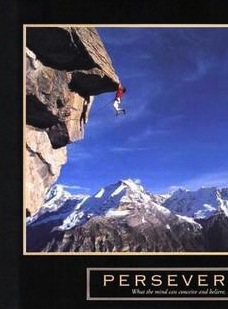(click the image above to see Bernadette's website)
Why is Bernadette Moreno's website so great? I've had a support teacher and a student, in two completely unconnected incidents, spontaneously single out her website for praise.
It
is a really nice looking website -- the layout is professional, the font is playful and fun, and there's a great image on the home page. But that's not what seems to matter most.
"It's got everything," said this student, when I asked him why he liked it. "All of the assignments are there, and she's got a calendar with all of the due dates. If I lose a handout, I just have to go there and print it out." For students like this one, who are bright and capable, but not so well organized, this is a boon.
What matters to students is the
information that the site can provide, and Bernadette's (and many others; she's not the only one who diligently updates her site) provides the information a student needs most. -- posting as many assignments and handouts as you can, and having a clear and organized assignment page helps your students directly -- but it also helps your allies: the other teachers and staff who work with the student, and the students' parents.
When you update your website, you give parents a tool they can use to support their children and hold them accountable.
For many parents, they can only find out about assignments through the website, and parents can't hold their son or daughter accountable without good information. Since time immemorial, students, when asked what their homework for the night is, will say: "Nothing." Or "I've done it already." And maybe they think they have. But if parents who need to can check a website, there's a much greater chance they can help make sure their student has done his or her work. You also help all of the other adults here who are working to help your students -- in the Nest, in the labs, in Support.
You also protect your own time, when you keep your website updated.
Every handout you post electronically is a handout you never have to print out, or copy, again -- and it's another conversation you never need to have, either -- you never have to give up your time during lunch or planning, when the conscientious but disorganized students comes to ask for papers they've lost. You can spend your time with students working on academics, not organization.
It does take time to update your website.
But here's a possibility: update it in class while students are watching, during the minutes when students are writing down the upcoming events and assignments in their planner. Instead of writing down the upcoming assignments in chalk, project your website for them. Once it's in their planners, and online, they don't need to see it in class.
Your students will benefit directly, their parents will be better informed and able to help you, and you will have to spend less time helping students resolve problems caused by their lack of organization.
Don't worry too much about fonts, colors, and all of the bells and whistles -- unless it's fun for you. Just get that vital information up there.
For those of you who update their website (and there are many of you, I know), bravo!
If you want help to make your website easier for you to update, or easier for students to navigate, -- or, as always, if there's anything else I can do to help you make your teaching easier, more fun, or more effective -- let me know.





















